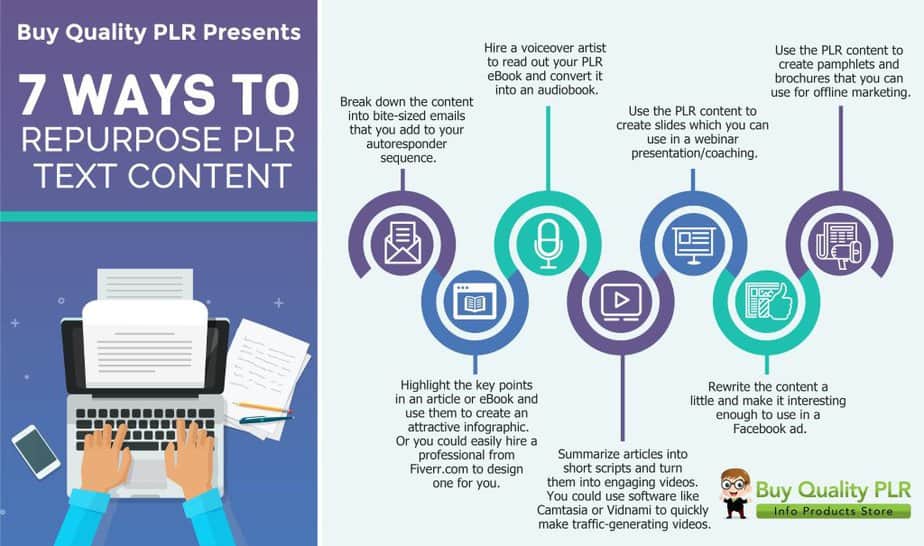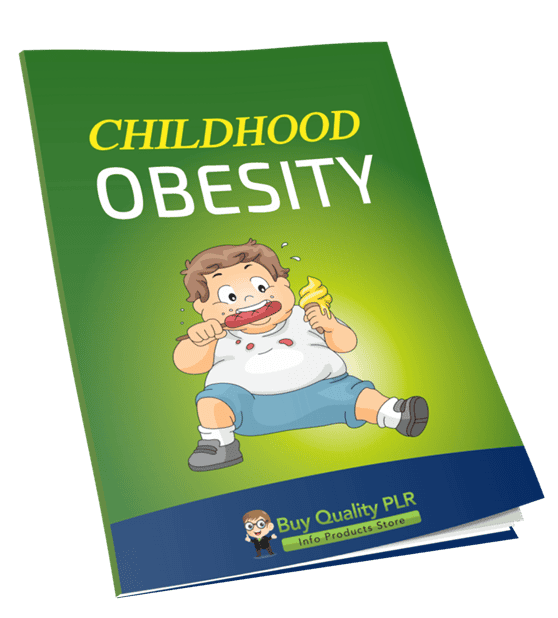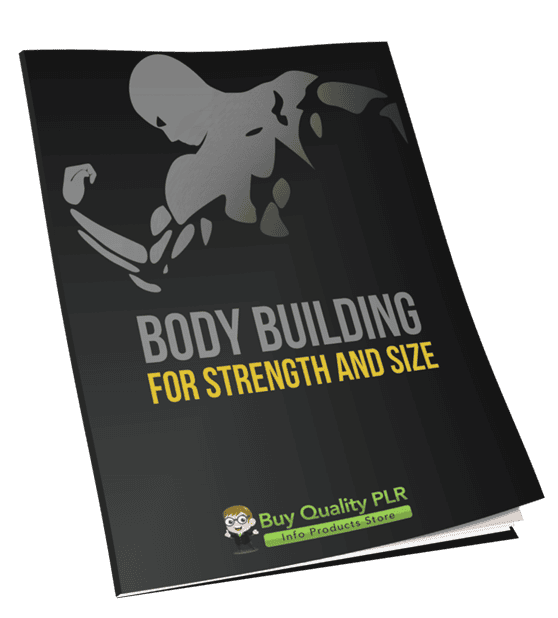
How to Rewrite PLR Articles
in Blogging, Content Marketing, Internet Marketing, Make PLR Unique, Niche Marketing, PLR Content, PLR Rebranding, Private Label Rights, Using PLR#plrarticles #rewriteplr #plrcontenttips #contentrepurposing #plrmarketing #articlerewriting #contentcreation #digitalproducttips
How to Rewrite PLR Articles: Tips to Make PLR Content Unique
In the ever-evolving landscape of content creation, utilizing Private Label Rights (PLR) articles offers a unique opportunity for writers and marketers alike. However, the challenge lies in transforming these pre-written PLR articles into original content that resonates with your audience. This article delves into effective strategies and techniques to rewrite PLR content, ensuring that it not only stands out but also serves a specific purpose in your content marketing efforts.
What is a PLR Article and How Can You Rewrite PLR Content?

Understanding Private Label Rights (PLR)
A PLR article is a piece of content that comes with private label rights, allowing buyers to modify, reuse, and even sell the written PLR content as their own. The primary appeal of PLR products is the convenience they offer, as they come pre-written and require minimal effort to deploy. However, the challenge is that many individuals purchase the same PLR articles, leading to the potential for duplicate content across various platforms. To maintain your content’s integrity and ensure it is unique, it’s crucial to understand how to effectively rewrite the PLR content.
Why Rewrite PLR Articles?
Rewriting PLR articles is a crucial step in maximizing the value of the content and ensuring it serves your business goals effectively. Here are several key reasons why rewriting PLR articles should be an integral part of your content strategy:
1. Add Value and Relevance to Your Audience
The primary reason for rewriting PLR articles is to tailor the content to your audience’s needs. While PLR content is a great starting point, it’s important to adapt it to reflect the interests and concerns of your target market. Rewriting allows you to address specific pain points, incorporate examples or case studies, and align the material with the unique language and tone your audience expects. By doing so, you make the content more engaging and enhance its relevance, which increases the likelihood of conversion and engagement.
2. Avoid Duplicate Content Issues
One of the most well-known challenges with PLR content is the potential for duplicate content. If you use the content “as-is,” there’s a risk that it will be flagged as duplicate by search engines, which can negatively affect your SEO efforts. However, rewriting the content allows you to sidestep this issue by making the article unique to your website or brand. This ensures that your content stands out in search engine results, improving your chances of ranking higher and driving more organic traffic.
3. Reflect Your Brand’s Voice and Personality
Rewriting PLR articles provides an opportunity to infuse your brand’s personality into the content. Whether your tone is casual, professional, or educational, rewriting ensures that the article reflects your unique voice. This personalization helps create a connection with your audience, making the content feel more authentic and engaging. Instead of offering generic PLR content, you present your readers with a fresh perspective that aligns with your business values and message.
4. Improve SEO with Keyword Optimization
Rewriting PLR articles allows you to optimize the content for SEO by strategically incorporating relevant keywords. This helps the article rank better in search results for terms that are important to your audience. By adjusting the keyword density, adding synonyms, and ensuring that the keywords fit naturally within the context, you can create content that is both user-friendly and optimized for search engines. This increases the likelihood of attracting more organic traffic and improving your site’s visibility.
5. Update and Refresh Content
PLR content may not always reflect the latest trends or updates in your industry. By rewriting it, you have the opportunity to incorporate the most current information, best practices, and emerging trends. This ensures that the content remains relevant and valuable to your audience. Updating your content with new insights improves its quality and keeps it fresh and engaging for your readers, encouraging them to return to your site for more information.
6. Establish Your Expertise and Authority
Rewriting PLR articles also gives you the chance to position yourself as an expert in your field. By adding your own expertise, insights, and analysis, you elevate the content and make it more informative and useful for your audience. This added depth will build your credibility and help establish your authority in your niche. Over time, as you continue rewriting and personalizing PLR content, your audience will come to recognize you as a trusted source of valuable information.
7. Create Unique Content for Multiple Platforms
PLR content can be repurposed into a variety of formats, but it all starts with rewriting. Whether you are turning an article into a blog post, social media update, email newsletter, or podcast script, rewriting allows you to mold the content into different formats that suit the specific platform you are using. This flexibility saves you time and ensures that your content is adaptable and consistent across your marketing efforts.
Basic Techniques for Rewriting PLR Content
Rewriting PLR content effectively is essential for creating original, engaging material that resonates with your audience. Here are some fundamental techniques you can use to transform PLR articles into high-quality, unique content:
1. Change Sentence Structures
The first step in rewriting PLR content is to break free from the original sentence structures. By restructuring sentences, you ensure that the content doesn’t just mirror the original article. Experiment with different sentence types—short, punchy sentences for emphasis, or longer, more complex sentences for detailed explanations. This technique helps create a fresh flow of information, making the content more readable and dynamic.
2. Use Synonyms and Variations
One of the easiest ways to make PLR content unique is by using synonyms and varying word choices. This not only helps avoid redundancy but also enriches the vocabulary and style of the article. For instance, if the original PLR article uses the word “important,” you could substitute it with “crucial,” “vital,” or “essential,” depending on the context. Just make sure that the meaning stays intact while changing the wording. This technique will make your content sound original and more engaging to your readers.
3. Alter the Flow of Information
When rewriting PLR content, don’t just change the words—also consider altering the order of the information. Rearranging paragraphs or shifting the order of ideas can give the content a completely new feel and logical structure. For example, if the original article starts with a conclusion, consider leading with a compelling introduction or building a case before presenting the main points. This shift can make the content flow better for your audience and present the information in a way that’s easier for them to digest.
4. Break Down Lengthy Paragraphs
PLR content is sometimes densely written, which can overwhelm readers. To make your content more reader-friendly, break down long paragraphs into shorter, more digestible sections. This enhances the readability and improves the overall flow. Shorter paragraphs are visually less intimidating, encouraging readers to continue reading. Additionally, using bullet points or numbered lists can help to highlight key points, making the content more scannable and accessible.
5. Incorporate Your Own Insights
Adding your own perspective and experiences to the PLR content is one of the most powerful ways to make it unique. Share your personal anecdotes, insights, and lessons learned, especially if they’re relevant to the topic at hand. This helps differentiate your content from others who might be using the same PLR material. It also adds a personal touch, making the article more engaging and establishing your expertise on the subject matter.
6. Provide Additional Examples or Case Studies
PLR articles often offer generic advice, which may be valuable but lacks the personal touch that makes it stand out. By including specific examples, case studies, or real-world applications, you can make the content more practical and relatable. For instance, if the PLR article discusses time management, you can share an example from your own life or a well-known case study that illustrates the effectiveness of the discussed strategies. This not only adds value to the content but also positions you as an authority on the topic.
7. Add Visuals to Enhance the Content
While rewriting PLR content, consider adding visuals such as images, charts, graphs, or infographics to break up the text and make the content more visually appealing. Visuals can help clarify complex points and make the content more engaging. For example, if you’re writing about the benefits of a healthy diet, you could add a pie chart comparing the nutritional value of different foods. This makes the content more informative and provides a richer experience for the reader.
8. Align with Your Audience’s Language and Tone
The tone and language used in the original PLR content may not always align with your target audience’s preferences. Adjust the language to fit your brand voice and the tone your audience expects. For example, if you’re writing for a professional audience, you may want to use formal language and industry-specific terms. If your audience is more casual, opt for a conversational tone with accessible language. Customizing the tone ensures that your content resonates with your readers and aligns with your brand’s personality.
How to Avoid Duplicate Content When You Rewrite PLR Articles

The Risks of Duplicate Content
One of the most significant risks associated with using PLR articles without proper rewriting is the potential for duplicate content. Search engines like Google prioritize original content, and if multiple websites feature the same PLR articles, they may penalize those sites by lowering their rankings. This can severely limit your content’s visibility and reach. Therefore, you should invest time in rewriting your PLR articles to protect your site from these detrimental effects.
Strategies to Ensure Unique Content
To ensure that your rewritten PLR articles are unique, consider implementing several strategies. First, brainstorm keywords that are relevant to your audience and incorporate them naturally throughout the content. This enhances search engine optimization and aligns the articles more closely with what your readers are searching for. Additionally, think about restructuring the content. For instance, you might change the order of the points presented or introduce new sections that offer deeper insights. This allows you to take the original content and turn it into a new story.
Using Tools to Check for Duplicate Content
Utilizing article rewriter software or plagiarism detection tools can be incredibly beneficial when rewriting PLR articles. These tools help identify sections of your content that may still resemble the original PLR, allowing you to make further modifications. By combining these technological resources with your creative input, you can significantly enhance the uniqueness of your written PLR content. This proactive approach will not only save you time in the long run but also reassure you that your articles are original and compliant with search engine standards.
The Best Practices for Repurposing PLR Articles into Unique Content

Identifying Your Audience and Keywords
Before diving into the process of rewriting PLR articles, it’s essential to understand your target audience and the keywords that will resonate with them. Here’s how you can approach it:
Identify Your Target Audience: Understanding who you’re writing for is fundamental to creating content that speaks directly to their needs and interests. Consider factors like:
Age, gender, location are important factors to consider when tailoring your PLR content into original articles.
Interests, pain points, and goals
Professional background or industry
What challenges they face and how your content can provide solutions Tailoring your content to your audience ensures it’s relevant and engaging, building a stronger connection with your readers.
Conduct Keyword Research: Keywords are the bridge between your content and the audience searching for it. Use tools like Google Keyword Planner, SEMrush, or Ubersuggest to identify keywords that your audience is using. Focus on:
High-search-volume keywords that are relevant to your niche can be effectively incorporated into your PLR content into original articles.
Long-tail keywords, which are more specific and typically have lower competition.
Keywords with strong intent, such as “how to,” “best,” “guide,” or “steps to.”
Integrate Keywords Naturally: Once you’ve identified the right keywords, incorporate them strategically into your rewritten PLR content. Be mindful not to overstuff keywords, as this can hurt readability and user experience. Use them naturally within:
Titles and headers
The first paragraph and conclusion
Throughout the body of the content without disrupting the flow By properly integrating keywords, you can optimize your content for search engines while maintaining its value and readability for your audience.
By understanding your audience and strategically using the right keywords, you can rewrite PLR articles that are both engaging and SEO-friendly, improving both your visibility and authority within your niche.
Structuring Your PLR Content for Better Engagement
The structure of your PLR content is one of the most important aspects of its effectiveness. Even high-quality PLR content can fall flat if it’s not organized in a way that’s easy for readers to follow and engaging to consume. Structuring your content effectively can enhance readability, keep your audience’s attention, and make your content more memorable. Here are key strategies for structuring your PLR content to maximize engagement:
1. Create an Engaging Introduction
The introduction sets the tone for the entire piece, and it’s essential to hook your readers right from the start. Begin with a compelling opening sentence that grabs attention and sparks curiosity. You might want to ask a thought-provoking question, present a surprising fact, or share a brief anecdote that resonates with your audience. This approach not only makes readers want to continue but also sets expectations for the content that follows, encouraging them to keep reading.
Tip: Your introduction should also highlight the value the reader will get from the article, motivating them to read through to the end. Clearly state what problem your content will solve or what benefit the reader will gain.
2. Use Headings and Subheadings to Organize Content
Headings and subheadings play a crucial role in making your PLR content more scannable and digestible. Many online readers skim through content rather than reading it word-for-word, so breaking the content into clear, organized sections helps them easily navigate the material. Each heading should summarize the key point of the section, so readers can quickly find the information they are looking for.
Tip: Use H1 for your main title, H2 for major sections, and H3 for subsections. This hierarchy helps structure the content logically and improves SEO.
3. Use Bullet Points and Numbered Lists
Bullet points and numbered lists are excellent tools for presenting information in a concise, easy-to-digest format. These elements help emphasize important points and make the content feel less overwhelming, especially when dealing with complex or lengthy information.
Tip: Use bullet points to list out important takeaways, steps, or recommendations. Numbered lists work well when presenting a step-by-step process, making it easier for the reader to follow instructions or understand a sequence.
4. Break Content into Digestible Sections
Lengthy paragraphs can make PLR content feel dense and hard to follow. To improve readability, break the content into smaller, digestible sections. Aim for paragraphs that are no longer than 3–4 sentences. Shorter paragraphs give the eyes a break and make the reading experience smoother, especially on mobile devices where longer text blocks can appear overwhelming.
Tip: Each paragraph should cover a single point or idea. This keeps the content focused and prevents readers from feeling lost or confused as they move from one point to the next.
5. Use Engaging Visuals and Formatting
Visuals enhance engagement and improve retention. Adding relevant images, charts, infographics, or videos can clarify complex points, break up long blocks of text, and keep your audience interested. Proper formatting can also play a role in keeping your content visually appealing—use bold for important points, italics for emphasis, and colors for headings or key sections to guide the reader’s eye.
Tip: Ensure that visuals are high quality and relevant to the content. Adding a visual element every few paragraphs can also make your content more engaging.
6. Include Calls to Action (CTAs)
At the end of each section or article, include a call to action (CTA) to prompt further engagement. Whether it’s encouraging readers to sign up for a newsletter, share the content, or download a free resource, CTAs guide your readers to take the next step. Keep your CTAs clear, compelling, and aligned with your goals.
Tip: Use action words like “download,” “subscribe,” or “learn more,” and make sure the CTA stands out visually, such as using a button or bold text.
7. Conclude with a Strong Summary
End your PLR content with a conclusion that reiterates the main points, offers a quick takeaway, and reinforces the value of the content. The conclusion should leave the reader with a sense of closure and fulfillment. If appropriate, include a CTA here as well to encourage further engagement.
Tip: Summarize the most important points in a few sentences and encourage readers to take action, such as downloading a free resource, checking out other related content, or reaching out for more information.
Enhancing PLR Articles with Personal Insights
Adding personal insights to your PLR articles is a great way to make them unique and relatable. Here’s how you can take your PLR content to the next level and elevate it to something uniquely yours:
1. Share Your Personal Experiences
By weaving personal anecdotes into your PLR articles, you can make the content much more relatable and authentic. Whether it’s a story about overcoming a challenge or a lesson learned from a mistake, personal experiences help humanize your content and foster a deeper connection with your audience. People are drawn to stories because they evoke emotions and create trust. When you share real-life examples, it shows your audience that you understand their struggles or successes, making them more likely to engage with your content.
2. Provide Expert Tips and Insights
As someone who is likely an expert in your niche, adding your expert tips and advice can greatly enhance the value of the PLR content. Offer actionable recommendations, insights, or strategies that stem from your own experiences. For example, if you are writing a PLR article on time management, you can share specific techniques or tools you use to stay organized and productive. This type of expertise adds credibility to your content, positioning you as a trusted authority.
3. Tailor the Content to Your Audience’s Needs
PLR articles can sometimes be broad or generic, so personalizing them to cater to the specific needs of your target audience is essential. Adjust the tone, language, and examples to better fit your audience’s preferences. If your readers are entrepreneurs, for example, use examples and advice that resonate with business owners. Personalizing the content in this way ensures that it is not only relevant but also speaks directly to your audience’s unique challenges and goals.
4. Incorporate Your Voice and Tone
Every writer has a unique voice, and when you rewrite PLR articles, you should make sure the content sounds like you. Whether your style is conversational, authoritative, or humorous, ensure that your tone is consistent with your brand and resonates with your readers. This gives the content a more authentic feel and helps set it apart from the original PLR material.
5. Provide Context for Your Recommendations
While PLR content may offer general advice or tips, providing context for your recommendations will make them more relatable. Share why you believe a certain strategy works or explain how it has benefited you personally or professionally. For example, if the PLR article mentions using a specific tool or technique, explain how it has made a difference in your own workflow or productivity. Offering your perspective on the content will increase its value and make it more engaging.
6. Create Opportunities for Engagement
Encouraging your readers to share their experiences or thoughts can deepen the relationship with your audience. You can ask questions related to the topic, prompt them to share their own stories, or offer suggestions for further exploration. By making your content interactive and engaging, you’ll create a sense of community and encourage ongoing conversations with your readers.
7. Use Visuals and Examples to Clarify Concepts
Sometimes, your insights may be best communicated through visuals. If you’re discussing a process or idea, consider adding custom graphics, diagrams, or screenshots that complement your personal tips. Using visual elements alongside your content makes it more digestible and easier for your audience to understand, increasing their engagement.
How Can You Use AI Writing Tools to Rewrite PLR Articles Effectively

Choosing the Right AI Writing Tool
In the realm of content creation, the power of AI has become increasingly evident. Choosing the best AI writing tool is crucial when thinking about how to rewrite PLR articles. Look for tools that offer advanced features such as tone adjustments, content suggestions, and grammar checks. These capabilities can greatly enhance your rewriting process, making it more efficient and effective. Moreover, ensure that the AI tool you choose aligns with your specific content needs and objectives.
Tips for Using AI to Create Unique PLR Content
When using AI to rewrite your PLR articles, it’s essential to maintain a balance between automated assistance and your own creativity. Start by inputting your PLR content into the AI tool and request rewrites or suggestions. However, always review and refine the output to ensure it aligns with your voice and style. This collaborative approach can save time while still allowing for a unique and engaging piece of content. Remember, while AI can assist in generating ideas and phrases, your personal touch is what ultimately makes the content resonate with your audience.
Combining AI and Human Touch for Best Results
The best way to achieve high-quality, unique PLR articles is to combine the efficiency of AI with the human touch. Use AI-generated suggestions as a foundation, and then manually rewrite the content to reflect your perspective, voice, and insights. This will help you maximize your PLR content’s potential, making it unique, engaging, and valuable to readers. This synergy between AI and human creativity can significantly enhance your content creation process, leading to better outcomes and greater audience satisfaction.
The Benefits of Rewriting Your PLR Articles for Content Creation

Saving Time in Content Production
Rewriting PLR articles is an incredibly effective strategy to save time while maintaining high-quality content production. Instead of starting from scratch, you’re able to leverage pre-existing material, which can significantly reduce the amount of time spent on content creation. Here’s how it works and how you can benefit from it:
1. Build Upon a Foundation
PLR content gives you a solid foundation. The research and writing have already been done, and your task is to customize and enhance the content to match your brand’s voice and target audience. By focusing on personalization and adding your unique perspective, you can quickly transform standard PLR into something fresh and original. This allows you to maintain consistency in your content production without sacrificing quality.
2. Speed Up Content Creation
Creating content from scratch can be time-consuming. However, with PLR, you eliminate the need to do extensive research or brainstorming. You simply need to rework the existing content to fit your style, tone, and niche. Whether you’re transforming an article into a blog post or a series of articles into an eBook, you’re saving hours of effort that would otherwise be required to create content from scratch. This allows you to meet deadlines more easily and ensures you can produce more content in less time.
3. Streamlined Workflow
Utilizing PLR content effectively can help streamline your workflow. Instead of worrying about writer’s block or the need to constantly come up with new ideas, you can focus on improving the structure, relevance, and quality of the content. You’ll be able to allocate your time to adding value through insights, graphics, and personal anecdotes, rather than spending time on content creation from scratch. This improved efficiency leads to better productivity, allowing you to stay ahead of your content schedule and maintain a steady flow of fresh material.
4. Increased Output and Consistency
Consistency is key to building an engaged audience. Using PLR content allows you to maintain a regular posting schedule without overextending yourself. With the time saved from rewriting PLR, you can publish more frequently, whether on your blog, social media, or email newsletters. The ability to create and publish content at scale is a huge advantage, ensuring that your audience stays engaged with new and relevant content.
5. More Time for Other Important Tasks
The time saved by using PLR content can be allocated to other critical tasks, such as marketing, audience engagement, SEO optimization, and business strategy. Since content creation often takes up a significant portion of an entrepreneur’s time, freeing up that time allows you to focus on other areas that can grow your business. This increased efficiency can directly contribute to the success of your online brand.
6. Scalable Content Production
By consistently leveraging PLR content, you can create scalable content systems. For example, if you’re running a blog, you can set up a routine where you consistently repurpose and rework PLR content to ensure you’re posting regularly. As your content base grows, you can expand into new formats, like eBooks, courses, or workshops, by repurposing the same lot of PLR articles. This scalability helps to meet the demands of growing traffic while keeping your content output manageable.
7. SEO Benefits from Increased Content Volume
Publishing regularly with well-rewritten PLR content can also benefit your SEO strategy. Fresh, relevant content that incorporates targeted keywords will help improve your website’s search engine rankings. By repurposing PLR content and strategically placing keywords throughout your rewritten articles, you can improve your site’s visibility and attract more organic traffic without the need for constant new content creation.
Generating High-Quality, Unique Articles
Focusing on uniqueness when rewriting PLR articles results in the creation of high-quality pieces that can stand alone. By applying the techniques outlined earlier, such as keyword integration and personal insights, you can elevate the content’s quality significantly. This focus on quality not only benefits your audience but also improves your site’s credibility and authority in your niche. As a result, your content becomes a valuable resource that readers are likely to return to and share.
Leveraging PLR Content for Blogs and Other Platforms
Rewriting and repurposing your PLR articles offers numerous opportunities to expand your content strategy and increase engagement across various platforms. By transforming your PLR content into different formats and adapting it for blogs, social media, newsletters, and even video scripts, you can reach a wider audience and maximize the value of the content you already own. Here’s how you can effectively leverage PLR content across multiple channels to grow your online presence:
1. Repurpose PLR for Blog Content
Blogging is one of the most effective ways to establish authority and build an online presence. By rewriting PLR articles, you can create fresh, high-quality blog posts that resonate with your audience. Start by selecting relevant PLR content in your niche and rewriting it to reflect your unique voice and insights. Add your personal experiences, examples, and updated information to make the content more engaging and valuable to your readers.
You can also break down longer PLR articles into multiple blog posts, turning a single piece of content into a series. This helps keep your blog consistently updated with valuable information while giving your readers more in-depth coverage of a particular topic. Additionally, consider adding relevant images, infographics, or charts to make the blog post more visually appealing and shareable.
2. Use PLR Content for Social Media
Social media is an excellent platform for promoting your blog posts and engaging directly with your audience. By repurposing your PLR articles, you can easily create social media posts that drive traffic back to your blog or website. For example, you can break down your PLR articles into bite-sized pieces, sharing key takeaways, quotes, or tips as individual posts.
Consider creating shareable graphics using tools like Canva to highlight important points or statistics from your PLR articles. With platforms like Instagram, Twitter, and Facebook, visual content tends to generate more engagement, so adding eye-catching graphics can increase your chances of getting noticed.
Another effective strategy is to create social media polls, questions, or discussions based on topics from your PLR content. This not only sparks engagement but also establishes you as an authority who listens to and interacts with your audience.
3. Transform PLR Content into Newsletters
Newsletters are a fantastic way to keep your audience engaged and nurture relationships with them over time. Repurpose your PLR articles into informative and engaging email newsletters that offer value to your subscribers. You can highlight specific topics or provide summaries of longer PLR content, with links to the full blog posts for further reading.
Personalize your PLR content by adding insights or commentary on how the information is relevant to your audience’s needs. Make sure your newsletter includes a clear call-to-action (CTA), encouraging readers to visit your website, check out your products, or join your email list.
Additionally, you can use PLR content to create a drip email sequence for new subscribers. By breaking down your content into digestible chunks, you can keep your audience engaged over time with valuable, educational material.
4. Repurpose PLR into Video and Podcast Scripts
Video and podcasts are becoming increasingly popular as content formats. Repurposing your PLR articles into video or podcast scripts is a great way to tap into new audiences and expand your content strategy. Take the main points of your rewritten PLR articles and transform them into a script that you can use for video tutorials, webinars, or podcasts.
For videos, create a slide deck or visuals that accompany your script to make the content more dynamic. Platforms like YouTube are great for online marketing, and by utilizing the SEO capabilities of YouTube, you can attract traffic from search results and gain new followers.
For podcasts, you can provide in-depth discussions on the topics covered in your PLR content, engaging listeners with thought-provoking conversations, guest interviews, and actionable tips. Podcasts offer a unique opportunity to connect with your audience in a more personal and conversational manner.
5. Create Lead Magnets from PLR Content
Lead magnets are valuable resources offered in exchange for email subscriptions. By leveraging PLR content, you can quickly create high-quality lead magnets such as eBooks, guides, and checklists. Rewriting and customizing your PLR articles into downloadable PDFs or interactive documents can provide your audience with useful content while helping you grow your email list.
Consider offering a series of lead magnets based on your PLR articles. For example, you could offer a free eBook or report as a lead magnet and follow up with additional content, such as templates or resource lists, to continue nurturing your leads.
6. Utilize PLR for Affiliate Marketing
PLR content can also be used to enhance your affiliate marketing strategy. For instance, you can integrate affiliate links into your rewritten PLR content, such as recommending tools, resources, or products that align with the content’s subject. By strategically placing affiliate links in blog posts, social media posts, and newsletters, you can create additional revenue streams while offering valuable recommendations to your audience.
Make sure the products or services you promote align with the content and resonate with your target audience to ensure that your affiliate marketing efforts are successful.
Conclusion: Maximizing Your Content Strategy with PLR
By strategically repurposing and leveraging PLR content, you can expand your content strategy across various platforms and reach a broader audience. Whether you’re creating blog posts, social media updates, newsletters, videos, or lead magnets, PLR content provides a solid foundation for producing valuable material quickly and efficiently. The ability to customize and adapt PLR content to different formats ensures that your content stays fresh and engaging, helping you grow your online presence, increase your reach, and establish yourself as an authority in your niche.

Frequently Asked Questions
Q: What is the best way to rewrite PLR articles?
A: The best way to rewrite PLR articles is to focus on understanding the original content and then rephrasing it using your own words. You can also add your insights and examples to make it unique and engaging.
Q: How can I repurpose PLR articles and blog posts effectively?
To repurpose free PLR content and blog posts effectively, consider turning them into different formats such as videos, infographics, or podcasts. This allows you to reach a wider audience and engage with them in various ways.
Q: Where can I find quality PLR content?
A: You can find quality PLR content from various online platforms that specialize in selling or providing free PLR. Always look for reviews and ratings before purchasing to ensure you are getting high-quality PLR articles.
Q: What are some ways to use PLR content to create original material?
A: Some ways to use PLR content to create original material include editing the generated content, adding personal anecdotes, combining multiple PLR articles into one, and updating information to reflect current trends.
Q: Can I buy PLR content that is already unique?
A: Yes, you can buy PLR content that is already unique, but it is essential to verify the quality and originality before purchase. Always opt for reputable sources that offer high-quality PLR articles.
Q: How do I unlock the power of PLR content?
A: Unlocking the power of PLR content involves understanding how to effectively edit and repurpose it to fit your brand voice. This includes rewriting PLR articles, adding value, and ensuring the content resonates with your target audience.
Q: Is it possible to easily rewrite PLR content and make it unique?
A: Yes, it is possible to easily rewrite PLR content and make it unique by using synonyms, changing the structure of sentences, and incorporating your own perspective. This process helps you produce high-quality and original content.
Q: What should I consider when editing PLR articles?
A: When editing PLR articles, consider the target audience, the relevance of the content, and any updates needed to ensure accuracy. Additionally, focus on enhancing readability and engagement to improve the overall quality.
Q: How can I create high-quality content using free PLR resources?
A: To create high-quality content using free PLR resources, start by selecting well-written PLR articles, thoroughly editing them, and adding your unique insights. Consistently revising and updating the content will also help maintain its quality.











